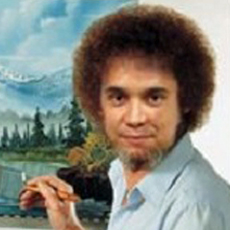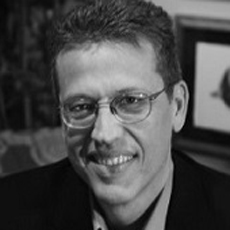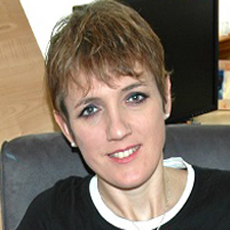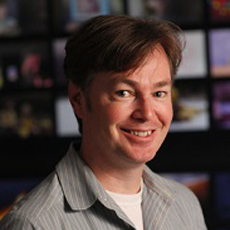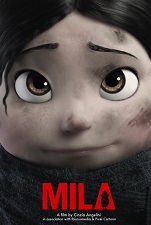 Our journey accompanying the creation of Mila continues.
Our journey accompanying the creation of Mila continues.
After the story and the character design are set, it is time to create the definite look of the overall film.
That’s where Cesar Alejandro Montero Orozco comes in.
He was born in Guadalajara Mexico, but left his home in 2004 to travel the world to study art, and later work as an artist. He has worked in London, Canada and the USA. He’s a nomad, as many people that do computer graphics must be; they tend to go where work is. He’s married to an animator and loves videogames. So pretty much 100% of the time he’s either doing graphics, talking about graphics, or enjoying graphics!
As a Surfacing Artist at Dreamworks Animation from 2008 to 2014, he worked on Shrek 4, Kung Fu Panda 2, Puss In Boots, Turbo and En Route!
He’s now a 3D Generalist/Designer VR Interactive at Ryot.
 AnimatedViews: Cesar, how did you discover the Mila project and what made you want to join it?
AnimatedViews: Cesar, how did you discover the Mila project and what made you want to join it?
Cesar Alejandro Montero Orozco: A coworker of mine named Violette Sacre, and Philippe (modeling sup) needed someone with a good eye and technical chops to help with the project. I wasn’t sure at that time because I was very busy with work. It was when I met Cinzia that I realized it would be a great project. She is the Director, and she is super cool to talk to— someone genuinely good that wanted to make a difference with her short. I wanted that, something that was not just about making money, but making a change in the perspective of others towards a situation in the world.
AV: Can you tell me about your role as a Visual Development Supervisor and the challenge that position represents to you within the Mila project?
CAMO: I help define the look of Mila. In a way, you help put a puzzle of models, textures, and lights together. This in return helps communicate a specific visual and emotional message the Art Director and Director are looking for.
Mila has changed technology and teams over the years. It is the nature of non-profit volunteer projects. The greatest challenge has been to create a look that is different, beautiful, yet relatively cost effective and fast to implement by our constantly rotating artists.
Francesco Giroldini, our lighting supervisor, has done an amazing job in taking the look of the film further. If it wasn’t for the amazing visual development of our Art Director Alexandra Kavalova, I would have never been able to interpret what Cinzia had in mind. Philippe Brochu and the modeling team also did an amazing job. In a way, look development has been a team effort. I just have been fortunate enough to be in the trenches for the longest guiding the wagon.

AV: How would you describe the process of visual development of Mila?
CAMO: That question is worth a book! It has been quite a challenge as well as a satisfaction.
When I arrived to Mila, Cinzia had a beautiful old trailer created from many years ago. Unfortunately, she didn’t have anymore the technology used to attain that look. We initially thought about replicating the exact same look from that old trailer. Soon we realized that the real question was not how the pixels looked, but how they felt to the audience.
We initially worked with a watercolor effect, but it proved too flat for MentalRay, and too time consuming for the slow computer of our students. We had the idea of getting a shader writer, but we couldn’t afford waiting longer.
I decided to contact the guys from Arnold Renderer. I knew that it was very fast, and easy to learn. Fortunately, they decided to support us. This brought the project to a new phase of visual exploration.
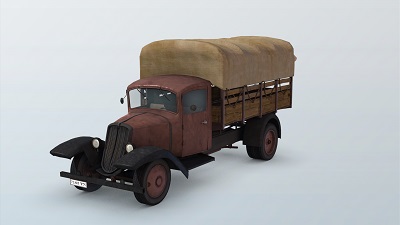
AV: How would you describe the final visual aspect of the film?
CAMO: “Contrast!” The film has two distinctive looks: one is dark and cruel, the other one is happy and dreamy. The textures themselves are full of rough and rich history, while Mila is soft, new and delicate. It is this contrast that allows us to convey the emotions in the story without dialogue.
It is all about contrast. The sequences contrast between dark war and light dream. Mila is delicate and soft, her environment is rough and cruel. Dark and Light, Shiny and Dull. Ying and Yang.
The film does not have dialogue. Visual communication through visuals is essential. Cinzia solved it by using two different worlds: the dream and the dark. Alexandra took it further with color and shade in 2D. I then continued with textures and shaders. Francesco then refines with light. I believe that the visual development of this movie is an act of teamwork.
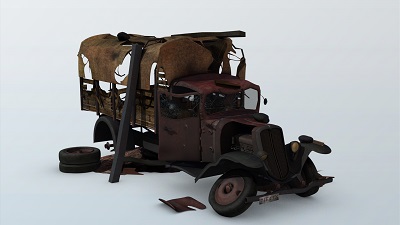
AV: What were your sources of inspiration?
CAMO: Trento, Italy. I watched and learned every single detail of the real plaza. Without a budget to pay for location scouting, I downloaded and saw every single picture Google could offer me of the place. I paid special attention to pictures from WWII, and what scars the plaza had in that time period compared to nowadays.
Since those sequences would play both in a “dream land” and war, research was more extensive than in an average production.
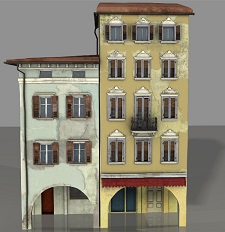
AV: What tools do you use to create your art?
CAMO: Before I did computer graphics, I used to work as a photographer. So my approach is a bit…strange. I think it is actually the first time I have talked about it.
For some reason, I have a good visual memory. I would download 200 or more pictures, and view them. I would normally be able to memorize them in just some seconds. This helps me visually get all of the details of the place at once. Like a database in my brain.
I then pull away, and make two bunches: one is the “keep” and one is the “discard.” This time I don’t focus on the details, and just the emotion created in the first second I see that picture. The ones that create a specific emotion are put in the “keep” bunch. The ones that don’t create a strong emotional response like I’m searching for, I put in the “discard”.
Once that is done, I go into the “keep” images, and I try to then understand why some image is creating a specific emotion. By now I already memorized the images, but I still spend a good amount of time, self-checking how slight emotions arise from watching a specific area of an image. I figure it out, and then translate that to a 3D sample, Photoshop file, or drawing to the artist. I also like to let them be free in their creations, but making sure the emotion I was aiming for is there. Sometimes, it is very subtle, but things make sense when they are put as a whole.
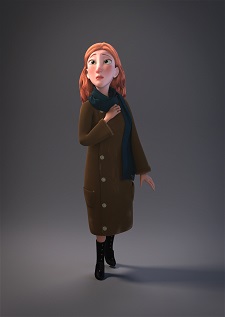
AV: What personal connection do you feel to this project?
CAMO: There is a deep personal connection. I have been in this project for 6 years. That is enough time for most to have babies, see them walk, and start having conversations with them. Mila is a baby for many of us. It is in the last month of pregnancy. It is when the baby grows the most. Soon it will be born and delivered to the world. It will walk around, talk to others, and touch the hearts of many. I can’t wait for that to happen!
AV: Visual Development is a very collaborative effort. All the more on a project like Mila. Can you tell me about that aspect?
CAMO: I have worked the longest with Cinzia Angelini. However, I have worked the most with Andres Amaya. He is my right hand in lookdev (look development), and the person responsible for guiding our artists with the implementation of Arnold renderer.
Andres Amaya is a prodigy of shading. He never needs a second explanation of what I am trying to visually achieve. He is also a great team player, and knows how to lead other artists that need help. I wouldn’t be able to do my job without him. He has a very bright future and I can’t wait to see where his eye and skills will take him.

AV: What would you like to retain from this experience?
CAMO: The pleasure of working for something worth more than money that will affect positively the life of countless people. Thanks to Mila I have been able to grow my skills in look development. Many have, and “graduate” by getting jobs they dreamt of having before starting the film. Working with Mila is transformative, and while I want for it to be delivered, I don’t want the experience to end.
For more info, please go to:
www.milafilm.com
www.whoismila.com
See the Mila Trailer on YouTube: goo.gl/g9lJtK
For updates on Mila: goo.gl/xD01AD
Or check them out on Facebook: goo.gl/A2BtId
Our warmest thanks to Cesar Alejandro Montero Orozco, Andrea Emmes and Cinzia Angelini! Visual Development art by Ruchita Jeswall, Alex Harris, Andres Amaya, Theunis Duvenhage and Guilherme Lopes. All Rights Reserved


